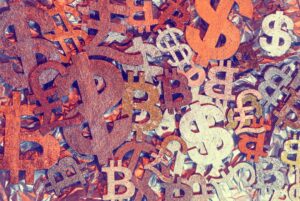Predicting Today’s Forex Rates: Analyzing Market Trends and News
The foreign exchange market, more commonly known as the forex market, is the largest and most liquid financial market in the world. With a daily trading volume of over $6 trillion, it offers enormous potential for profit to traders who can accurately predict and capitalize on market movements. One of the key factors in predicting forex rates is analyzing market trends and news.
Market trends play a vital role in determining the future direction of forex rates. Trends can be identified by analyzing historical price data and studying chart patterns. Traders often use technical analysis tools, such as moving averages, trend lines, and oscillators, to identify and confirm trends. By understanding the current trend, traders can make informed decisions about whether to buy or sell a particular currency pair.
There are three types of trends in forex trading: uptrend, downtrend, and sideways trend. An uptrend occurs when prices consistently make higher highs and higher lows. This indicates a bullish market sentiment, with buyers dominating sellers. On the other hand, a downtrend occurs when prices consistently make lower lows and lower highs, indicating a bearish market sentiment. A sideways trend, also known as a range-bound market, occurs when prices move within a specific range without making significant higher highs or lower lows.
News events and economic data also have a significant impact on forex rates. Various factors such as interest rate decisions, GDP growth, employment data, and geopolitical events can influence currency values. Traders need to stay updated with the latest news and economic indicators to have a comprehensive understanding of the market.
Central banks play a crucial role in shaping forex rates through their monetary policy decisions. For example, when a central bank raises interest rates, it attracts foreign investors who seek higher returns on their investments, leading to an increase in demand for the currency. This increased demand causes the currency value to rise. On the other hand, if a central bank lowers interest rates, it reduces the attractiveness of the currency, leading to a decrease in demand and a subsequent decline in its value.
Geopolitical events can also have a significant impact on forex rates. Political instability, trade wars, and natural disasters can disrupt economic activities and create uncertainty in the market. Traders need to closely monitor these events and assess their potential impact on currency values. For instance, if there is political turmoil in a country, investors may lose confidence in its currency, leading to a depreciation of its value.
In addition to market trends and news events, technical analysis tools can provide valuable insights into forex rate predictions. These tools help traders identify key support and resistance levels, which act as barriers for price movements. By analyzing these levels, traders can determine potential entry and exit points for their trades. Technical indicators, such as the Relative Strength Index (RSI) and Moving Average Convergence Divergence (MACD), can also provide signals of overbought or oversold conditions, helping traders make informed decisions.
While analyzing market trends and news is crucial for predicting forex rates, it is important to note that the forex market is highly volatile and unpredictable. No prediction method can guarantee 100% accuracy. Traders should always use risk management strategies, such as setting stop-loss orders and proper position sizing, to protect against potential losses.
In conclusion, predicting forex rates requires a comprehensive analysis of market trends and news events. By understanding the current trend and staying updated with the latest news, traders can make informed decisions about their trades. Technical analysis tools can provide additional insights and confirmation of potential price movements. However, it is important to remember that the forex market is highly volatile, and no prediction method can guarantee absolute accuracy. Traders should exercise caution and use proper risk management strategies to navigate the forex market successfully.






